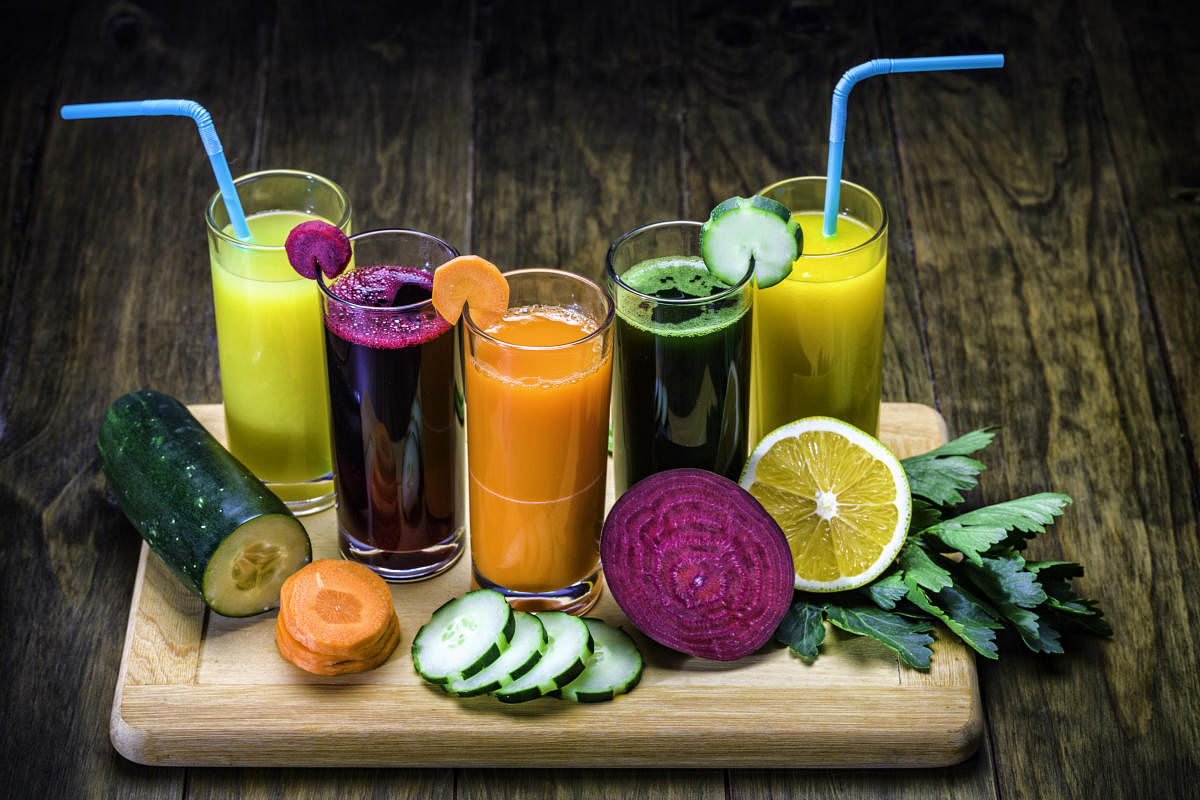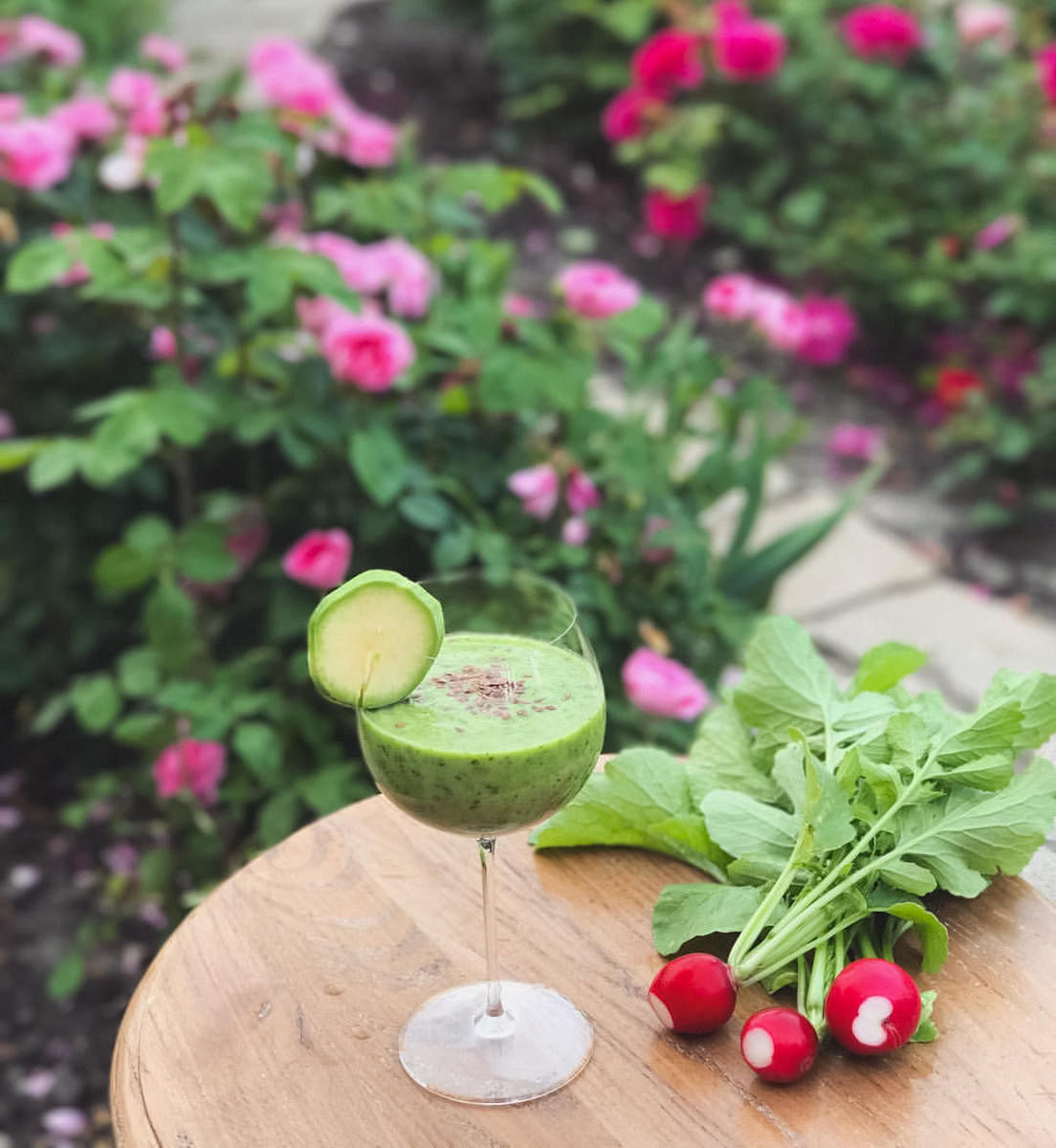

Vegetables are a storehouse of invaluable nutrients like vitamins, minerals, proteins, and precious fibre/roughage. Judicious use of green leafy and cruciferous vegetables in cooked form, as well as raw form in salads and juices, is the key to good health.
Normally, most of the vegetables bearing roots and tubers are low in calories. But, the way vegetables are cooked makes a lot of difference in ensuring full assimilation of their nutritive value. Various parts of the vegetables like stem (plantain), skin, pith (in gourds), seeds, stalks and top (as in radish), etc., have different roles to play in their nourishing wholesome value. Many vegetables have medicinal and curative properties too. Some vegetables have anti-cancer, BP and cholesterol-lowering properties, and are rich in antioxidants too.
Most of the vegetables are fat-free, low in sodium, rich in fibre. Regular intake of 2/3 vegetables in our daily diet is needed to maintain the health of gum, teeth, skin, tissue growth, internal organs. It is desirable to have 2/3 portions/varieties of vegetables in the daily diet. One should include at least one raw vegetable daily in salad/juice form.
Many vegetable juices can be used as home remedies for various minor discomforts without any side effects. Certain vegetables like ash gourd, bottle gourd, beetroot, carrot, cucumber, cabbage, radish, bitter gourd, banana stem, tomato etc., lend themselves well to be juiced and relished as milkshake or lassi. Plain vegetable juices can be made individually or mixed with 2/3 vegetables; Straining the juice is optional. Mango or gooseberry can be added, instead of lime juice, as a souring agent depending upon the taste. Here are a few healthy veggie juices to try for vigour, vitality and therapy too.
Ash gourd
Ash gourd is full of nutrients with a hydrating quality as it contains 95% of water. It is low in calories, high in soluble fibre with detoxing, memory boosting, and diuretic qualities. It helps to cure intestinal ulcers, constipation and aids in weight loss. A glass of pure gourd juice taken on an empty stomach is very efficacious in maintaining good stomach conditions.
For the ash-gourd juice: Peel and remove the pith, seeds and chop; Take 4 cups of the gourd and blend well; Add half a glass of water; mix well and serve plain. Serves 2.
Option: Add either salt or jaggery powder, with a pinch of cardamom powder. This can be taken on an empty stomach (for best results), as it is very efficacious.
Banana stem
Banana stem is a rich source of iron, potassium and Vitamin B6. It is highly cooling, aids in digestion, removes kidney stones, and alleviates urinary tract infection. It aids in insulin and haemoglobin production and helps to heal gastric problems and ulcers.
For the banana stem juice: Peel, slice and remove the fibre portion; then chop to 4 cups; Blend to a smooth paste and add 1 glass of water, and blend again and strain; Just add a little salt, lime to taste and serve. Serves 2.
Beetroot
This is an excellent source of Vitamins A, C, potassium and folate. It has anti-inflammatory, detoxifying, BP-lowering qualities. It improves blood circulation.
For the beetroot juice: This can also be prepared individually or mixed with carrots. For the juice, peel, chop and blend in a mixer to get a smooth paste. Add 1 and 1/2 glass of water and mix well; add either jaggery or salt and pepper, with a squeeze of lime.
Option: You can also make a milkshake or lassi with beetroot.
Bitter gourd
Bitter gourd is well-known for aiding insulin production and is good for especially diabetics. It is rich in Vitamin A, C, K, iron, potassium. It has powerful antioxidants, reduces BP and cholesterol, stalls the ageing process, cleanses the liver and boosts the immunity of the body to fight viruses.
For the bitter gourd juice: Take about half a cup of chopped bitter gourd and blend in a mixer till smooth; add 1 glass of water and strain; add salt and lime juice to taste and serve. Serves 2.
Bottle gourd
Bottle gourd is a highly cooling and hydrating vegetable. Rich in Vitamin C, iron and magnesium. Regular intake is good for reducing weight. It is good for diabetics as it helps to stabilise blood sugar levels. Heals stomach ulcers, maintains electrolyte balance, and acts as a stress-buster.
For the bottle gourd juice: Select a tender bottle gourd; Peel, chop about 4 cups of the vegetable, put in a blender with a little water; add 1 glass of water and blend well again; strain it, add salt and lime, some toasted cumin powder and serve. Serves 2.
Carrot
Carrot is a very rich source of carotenoids, that gets converted into Vitamin A. It also contains Vitamin A, B, C and quality fibre. It is good for eye health, cures gastric ulcers, aids in reducing belly fat and is a powerful antioxidant with anti-cancer properties.
For the carrot juice: It can be prepared on its own or mixed with beetroot or tomato. Take two carrots, peel and chop and then put in a blender along with 3/4 cashews and grind them to a smooth paste. Add 1 and 1/2 glass of water and mix well; add jaggery powder and cardamom powder; stir well and serve; makes two glasses. For a variation, salt, pepper powder and lime juice can be added to taste.
Option: Carrot milkshake and lassi can also be prepared by adding cardamom or rose essence, etc., according to one's preference. This is a highly nourishing drink.
Cucumber
Cucumber is a rich source of Vitamins B, C, K and other minerals, especially sodium. It is highly cooling, a diuretic, aids in weight loss, and lowers blood sugar levels.
For the cucumber juice: Select tender cucumbers, peel and chop to 4 cups; blend them in a mixer, till smooth, along with a small piece of ginger and a few mint leaves. Add a glass of water, mix well and serve with a dash of lime juice, garnished with chopped coriander leaves. Serves 2.
Radish
Radish is rich in Vitamin C, calcium, potassium and sodium. Its leaves are equally nutritious. It is high in fibre and reduces constipation and helps to heal piles. It helps to reduce blood glucose levels and boosts immunity too. It also enhances liver functioning and maintains a healthy metabolism.
For the radish juice: Radish juice can be used on its own or along with its green tops; Peel and chop or grate it; For 1 or 2 cups of radish gratings, add ½ a cup of green top choppings and blend to a smooth paste; add 1 glass of water and mix well; add half a glass of buttermilk with salt and roasted jeera powder and serve. Serves 2.
Tomato
Tomato is a very good source of Vitamin A, C, K, E, folate and potassium. It is rich in the antioxidant lycopene, which reduces cancer and heart risks, aids weight loss, maintains BP, healthy skin and eyes. Helps to lower blood sugar levels too.
For the tomato juice: Blanch 4 tomatoes and blend well; add 1 glass of water and strain; add jaggery powder, cardamom and lime juice or salt, pepper powder and lime juice and serve. Serves 2.
Cook’s nook
While cooking vegetables, it is better to cut them in medium size and not chop them too fine, as it leads to surface loss of nutrients.
While cooking cut vegetables, add them to boiling water, never steep cut vegetables in water, as all nutrients leach out through the process of osmosis.
As far as possible, steam cook cut vegetables to retain their nutrients.
While using vegetables in raw form for salads and juices, wash them first in warm water; peel and again wash and then use, especially root vegetables.
For greens and cabbage, add salt after a few minutes of cooking when the vegetable shrinks, to avoid over-salting.